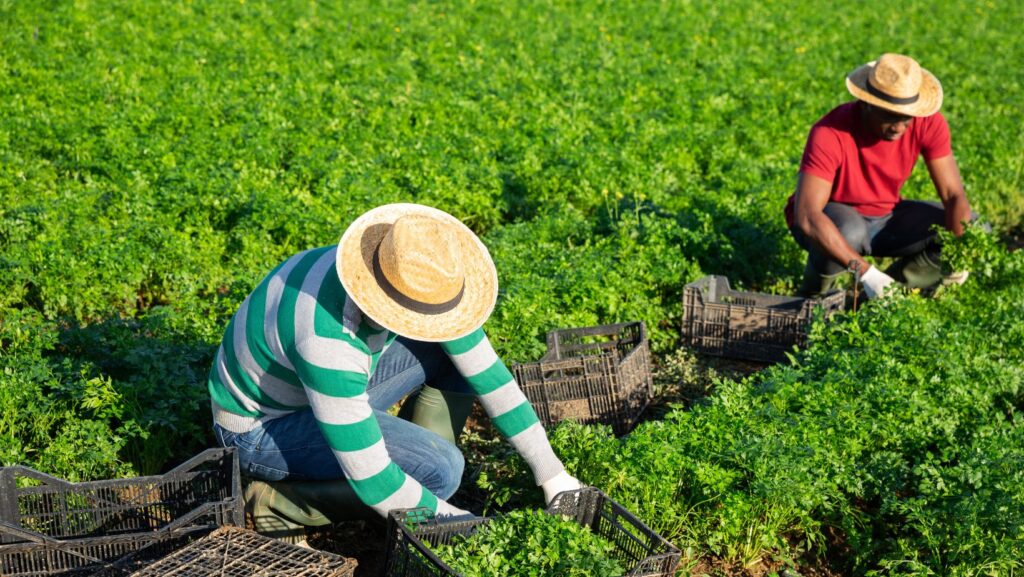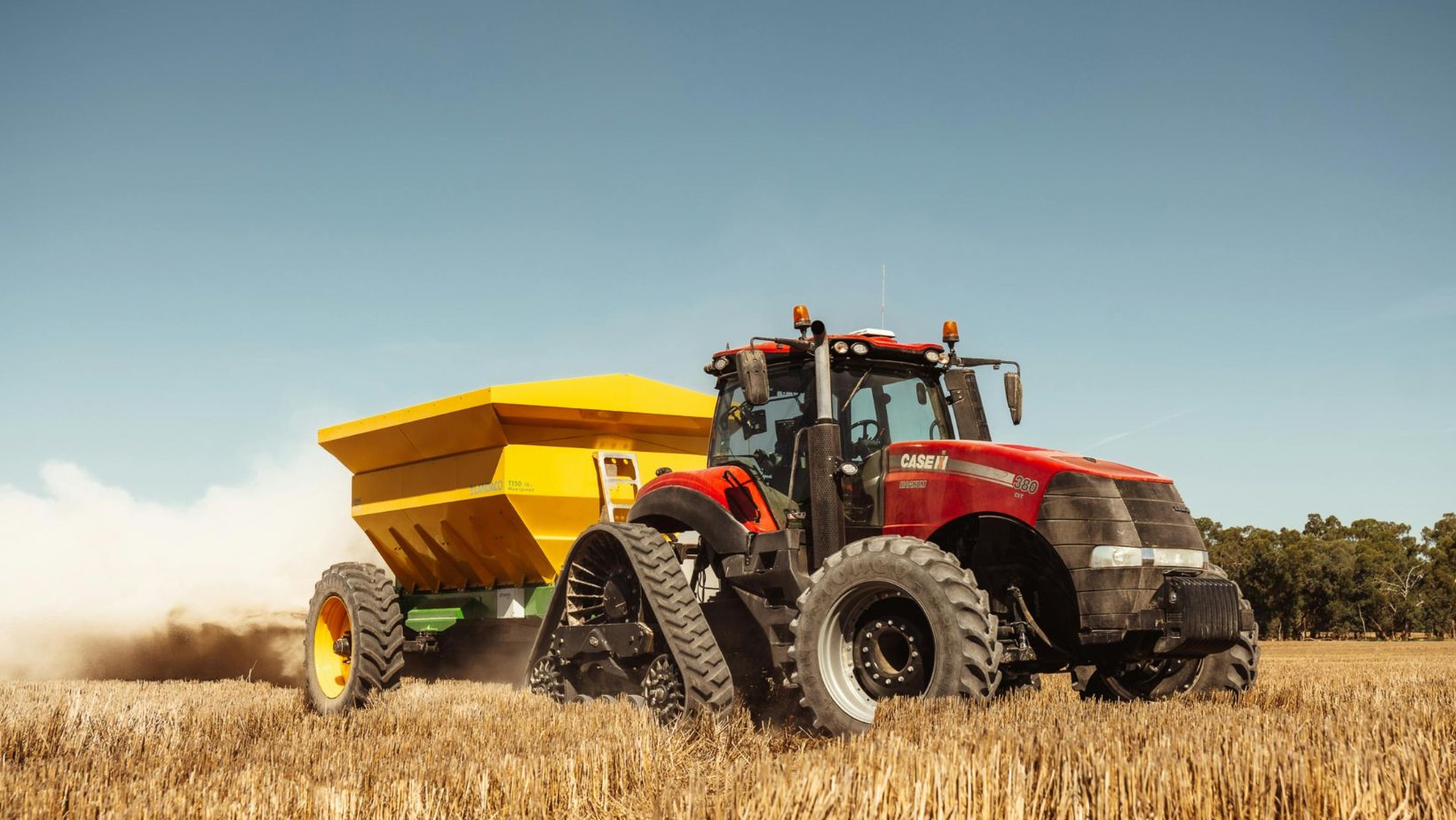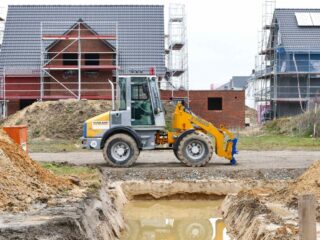
Running a successful farm means balancing traditional practices with technology that allows for efficient operations. As a farmer, you’ll constantly need to work smarter, not harder, by addressing rising costs, labor shortages, and increasing competition from other farms. So to get ahead of this game, a farmer needs to think beyond just producing more. It’s about efficient farm operations that allow better use of land and time.
Here are five ways you can use to increase farm efficiency.
1. Invest in the Right Farm Machinery
Without the right machinery on your farm, you’re looking at high labor costs, downtime, and output that doesn’t meet the full potential of your farm. Regularly assessing the tools and equipment at your disposal can help you identify what type of equipment you need to invest in, or retire.
One of the best examples is using bale wagons and balers for foraging and hay operations. Without them, you’d be investing long hours and extended workforce into hauling and stacking bales. With a bale wagon, you can automate the process and reduce required manual effort. With the reduced labor costs and faster harvesting, hay is stored faster than the weather conditions can spoil it.
Other equipment upgrades like tractors can further streamline operations. Think beyond just traditional tractor functions. With multifunctional attachments and loaders that can handle more than just one task, you can pay off the investment in a relatively short timeframe, making your farm more profitable.
2. Optimize Land and Crop Management
To get the most out of your farm, think long term. This means caring for your land in a way that promotes healthy soil. Crop planning and fertilization are essential to avoid overworked soil that has lost its fertility. Crop rotation, cover cropping, and soil testing can prevent reduced output and waste resources. On top of that, you’ll improve nutrient availability and maximize plant health for a larger harvest.
One of the most underrated techniques is precision planting, through which you can ensure optimal planting depth and spacing for healthier plants that thrive. It reduces waste and improves germination success. Together with good fertilization practices, these practices will keep your fields productive and restore natural resources.
Land management is as much about timing as it is about what’s planted. Rotating the crops when necessary or resting the fields when it’s the right time matters just as much as efficient planting. To maximize your efforts, you can utilize a crop calendar to ensure you get it right every time.
3. Improve Irrigation and Water Use
Water is the basis for farm success. If your irrigation is inefficient, it’ll drain both your finances and yield. Traditional practices like flood irrigation often cost a lot of time and effort as you have to excavate canals. Flood irrigation also wastes water and can actually lead to uneven crop growth. By contrast, modern drip irrigation systems allow you to ensure that the water reaches the plants when necessary at the right amount.
You can take it one step further, improving the output of your farm. Test technologies that allow you to track water use and measure soil moisture levels. Irrigating only when necessary not only saves water, but also prevents overwatering that ultimately damages roots and reduces crop quality.
With optimized irrigation, you’re looking at larger crop yields, lower utility costs and supporting sustainability efforts for the local communities. You can even use this aspect in your marketing, by positioning yourself as a responsible farmer.
4. Streamline Storage and Logistics
Once you have your crops harvested, moving and storing them can be a logistical nightmare if you’re not prepared. If your storage system isn’t prepared, your crops can spoil or get contaminated, undoing weeks of hard work and reducing profit. To avoid this scenario, make sure that you plan by seasons.
Farmers should ensure that their barns, silos, and sheds are clean and ready for storage before the harvesting begins. If you have everything ready before you start, you’ll reduce time spent moving goods, lowering the risk of damage to your yield.
Apart from storage, you should also think about farm logistics. Moving yields and materials across the farm is a labor-intensive and often time-consuming task. By planning the field routes, using bale wagons for hay transport, and investing in multipurpose trailers, you can cut down on unnecessary trips.
Logistics extend further than just routes chosen. Select the right equipment to manage the exact amount you’re planning to move around.
5. Embrace Technology and Data-Driven Decisions
Modern farming is about optimization, precision and fast execution. And the available technologies have followed the needs of a modern farmer. Precision agriculture systems, such as GPS mapping, sensors and software that collects data on soil, weather and crop performance, can truly bring your farming to the next level. Applying this extra information in the field translates into better decision making, whether it’s adjusting fertilization schedules or predicting harvest timing for best quality.
Build a system that allows you to gather data of your farm’s performance. You can track expenses, yields, and machinery maintenance, allowing you to pinpoint major bottlenecks and inefficient use of resources.
Even if you’re running a small farm, you can adopt a low-cost technology that will give you the upper hand to develop and grow further. With the right monitoring systems, you can even prevent problems before they occur.
Final Thoughts
Smart farming requires planning, data analysis, and the right investments. With careful management, your farm can transform into a business that turns a profit every time. The right farm machinery, land and crop management, optimized irrigation systems, storage and logistics are the cornerstones of an efficient farm. If you pair these practices with data gathering and analysis to make better decisions, you’re in for a fun and successful farming experience.













